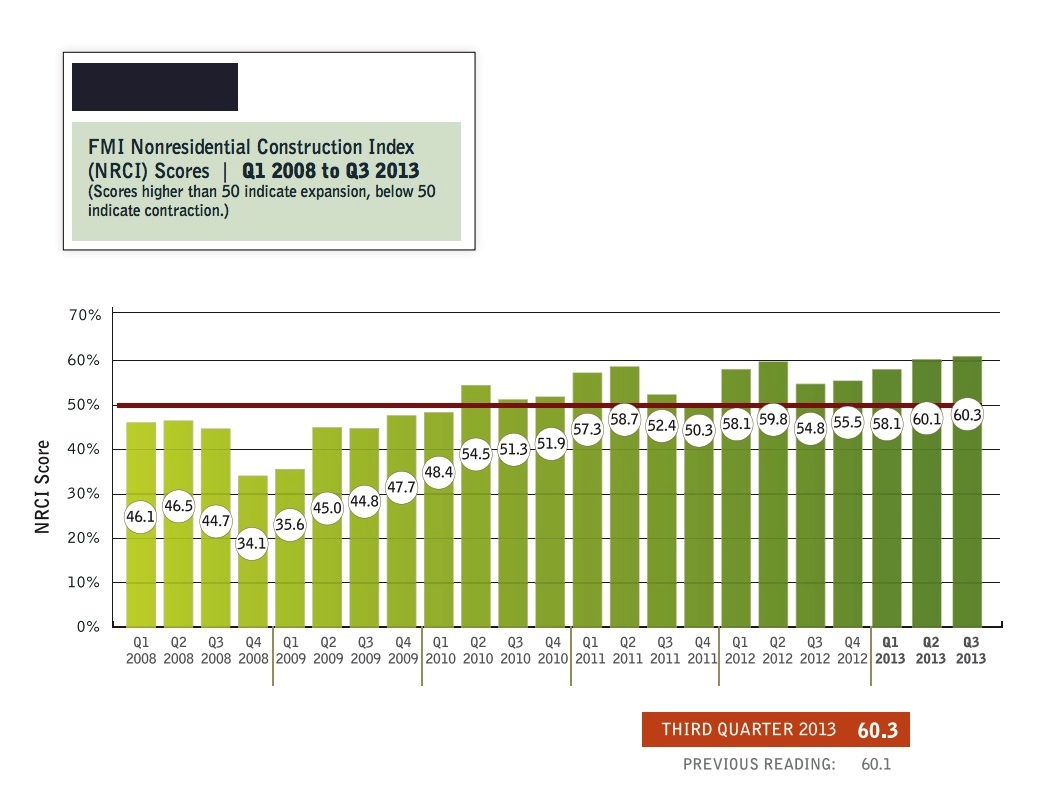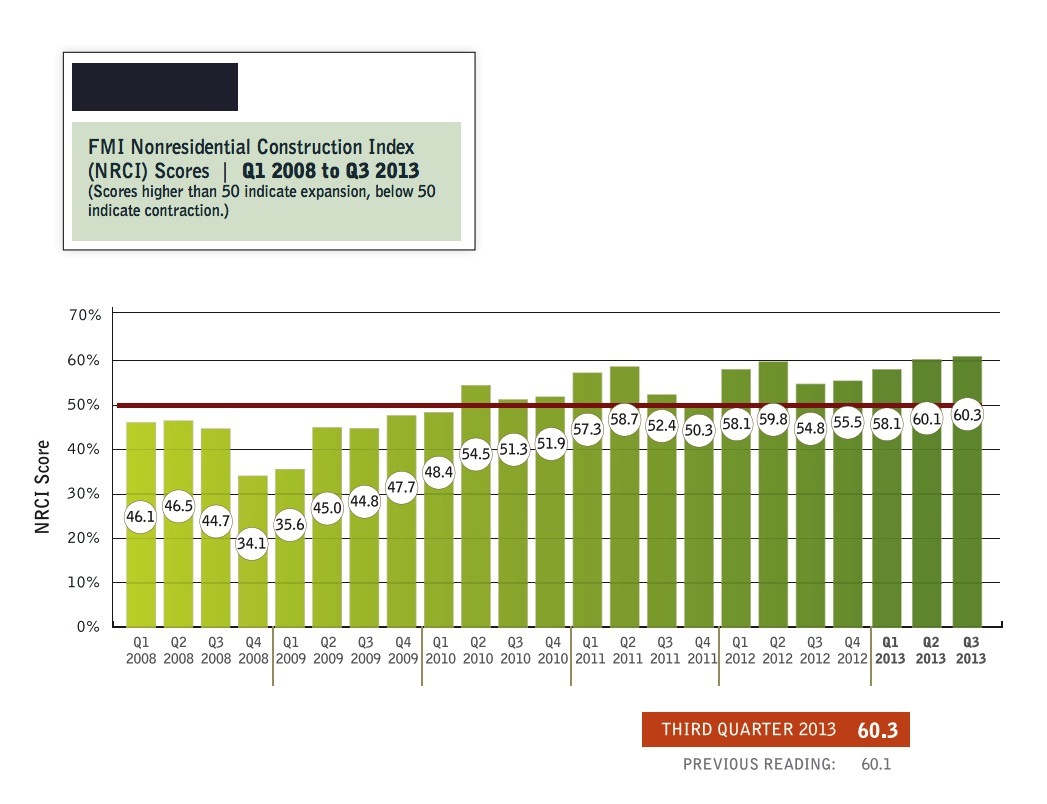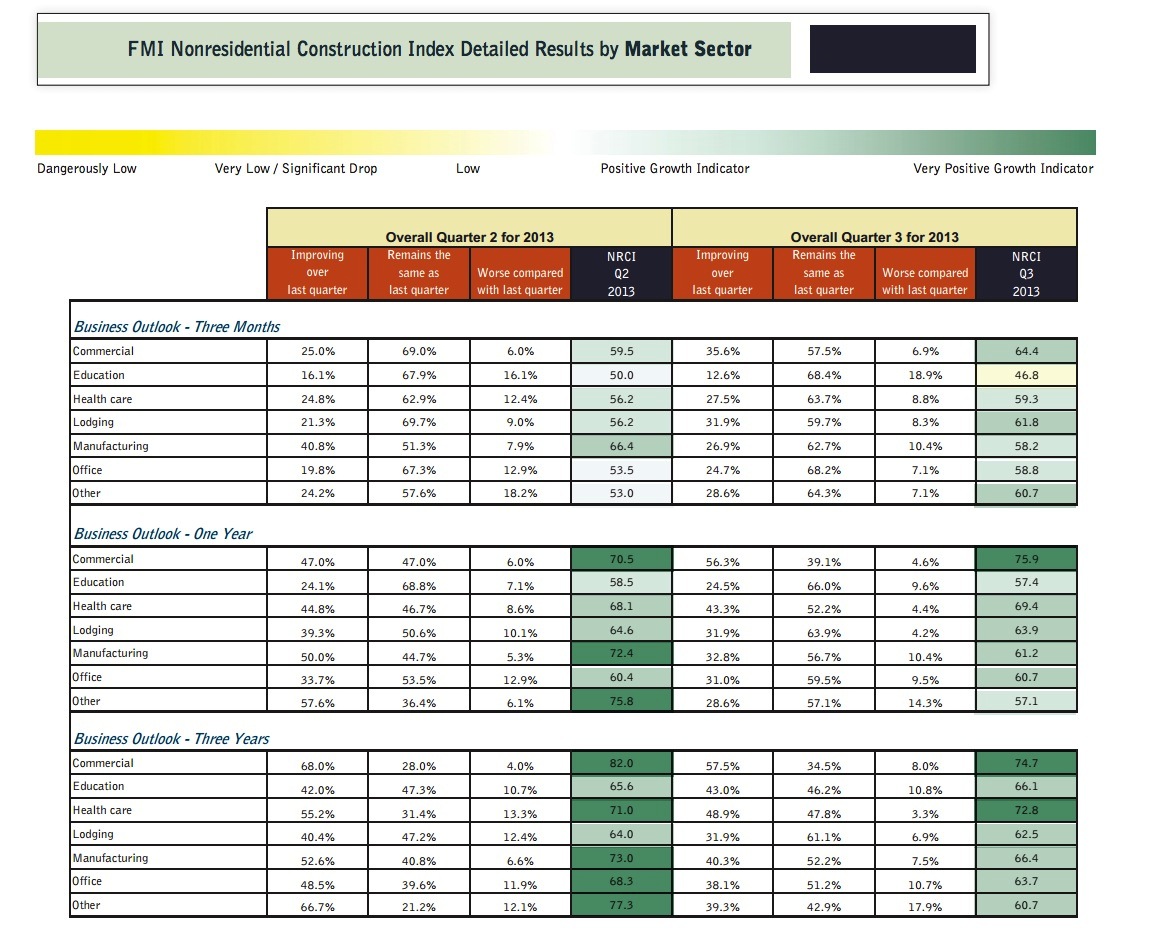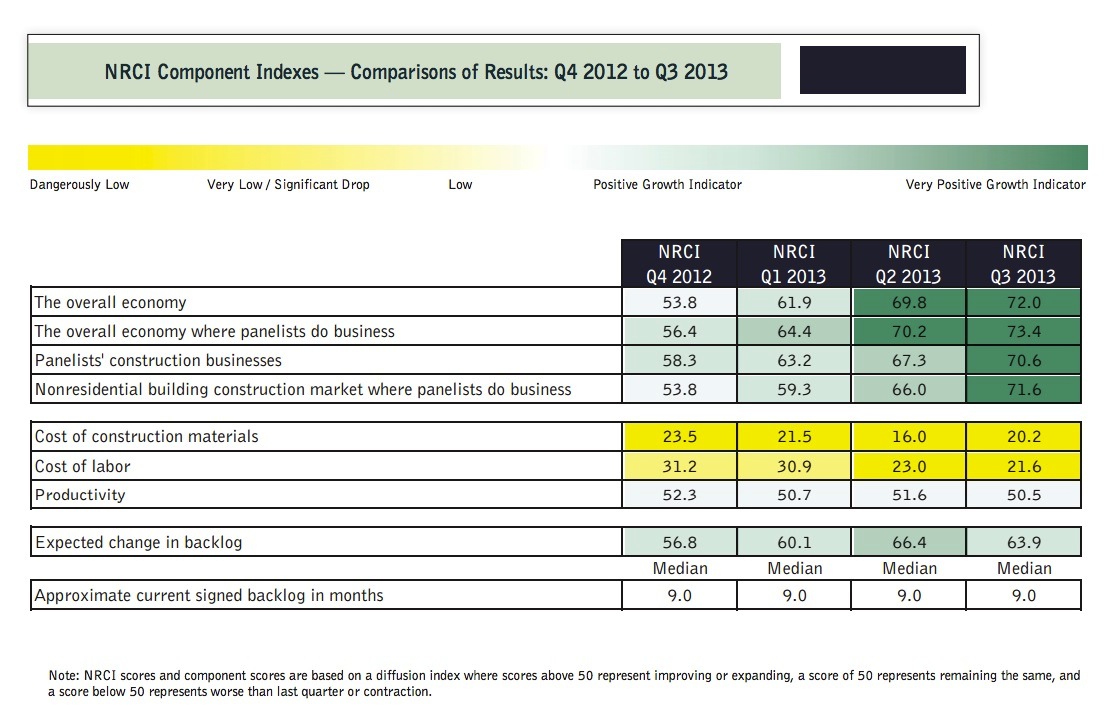FMI's 2013 Third Quarter Nonresidential Construction Index report shows a NRCI score of 60.3, a .2-point improvement over Q2.
Although the numbers aren’t drastically rising, the sustainability and continuing upward movement is encouraging. This score remains the highest score for the NRCI index since Q1 2009. The index for the overall economy rose to 72 points and the combined index sentiment for economies where panelists are doing business rose 3.2 points.
Cost of construction materials, cost of labor and productivity continue to hold down the index. Additionally, investments in technology, equipment and training are needed to keep the economy from going stagnant.
Panelists for this quarter’s NRCI suggest that the uncertainty for investments is a result of the immigration/labor bills, delays in implementation of “Obamacare” and the impact of residential growth on nonresidential construction. These issues are causing the industry to sit back and wait to see the outcomes before making any risky investments.
To download a copy of the full report, click here.
CLICK CHARTS TO ENLARGE
About FMI
FMI is a leading provider of management consulting, investment banking and research to the engineering and construction industry. We work in all segments of the industry providing clients with value-added business solutions. Founded by Dr. Emol A. Fails in 1953, FMI has professionals in offices across the U.S. FMI delivers innovative, customized solutions to contractors; construction materials producers, manufacturers and suppliers of building materials and equipment, owners and developers, engineers and architects, utilities, and construction industry trade associations. FMI is an advisor you can count on to build and maintain a successful business, from your leadership to your site managers. For more information, visit www.fminet.com.
Related Stories
| Aug 11, 2010
New book provides energy efficiency guidance for hotels
Recommendations on achieving 30% energy savings over minimum code requirements are contained in the newly published Advanced Energy Design Guide for Highway Lodging. The energy savings guidance for design of new hotels provides a first step toward achieving a net-zero-energy building.
| Aug 11, 2010
Oregon office building earns highest green globes rating
Columbia Square, a 313,000 square foot office building and flagship property in the Melvin Mark Companies real estate portfolio, has been awarded 4 Globes by the Green Building Initiative (GBI) for achievements in green design and sustainable operations. The building was rated under the Green Globes environmental design and assessment tool and the 4 Globes designation is the highest possible rating.
| Aug 11, 2010
Perkins+Will master plans Vedanta University teaching hospital in India
Working together with the Anil Agarwal Foundation, Perkins+Will developed the master plan for the Medical Precinct of a new teaching hospital in a remote section of Puri, Orissa, India. The hospital is part of an ambitious plan to develop this rural area into a global center of education and healthcare that would be on par with Harvard, Stanford, and Oxford.
| Aug 11, 2010
Burt Hill, HOK top BD+C's ranking of the nation's 100 largest university design firms
A ranking of the Top 100 University Design Firms based on Building Design+Construction's 2009 Giants 300 survey. For more Giants 300 rankings, visit http://www.BDCnetwork.com/Giants
| Aug 11, 2010
PBK, DLR Group among nation's largest K-12 school design firms, according to BD+C's Giants 300 report
A ranking of the Top 75 K-12 School Design Firms based on Building Design+Construction's 2009 Giants 300 survey. For more Giants 300 rankings, visit http://www.BDCnetwork.com/Giants
| Aug 11, 2010
AGC unveils comprehensive plan to revive the construction industry
The Associated General Contractors of America unveiled a new plan today designed to revive the nation’s construction industry. The plan, “Build Now for the Future: A Blueprint for Economic Growth,” is designed to reverse predictions that construction activity will continue to shrink through 2010, crippling broader economic growth.










